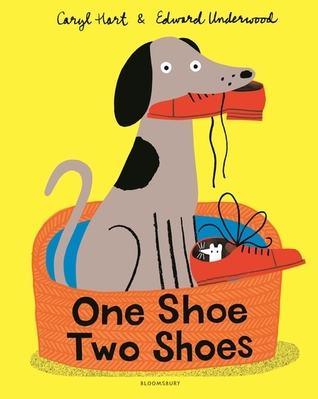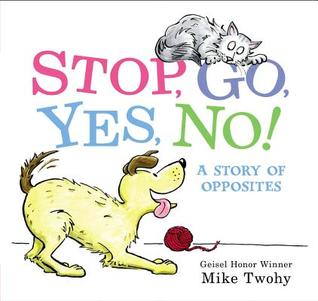One Shoe, Two Shoes by Caryl Hart, illustrated by Edward Underwood (9781547600946)
With a clear nod to Dr. Seuss and his iconic Red Fish, Blue Fish, this picture book celebrates rhymes, colors and footwear. The book begins with the dog having one shoe and the human having one shoe, then the two shoes are worn for a walk. There are different colored shoes, knotted laces, cowboy boots, and much more. Then a little mouse makes an appearance near the shoes. Could it be that the shoe is a house for a mouse? How many mice? The counting begins and eventually ends at ten. The dog investigates the mice for awhile but then heads out on another walk after fetching some shoes.
Hart’s text is simple with a bouncy rhyme that keeps the book merry. The pace is fast and jaunty, with plenty of action words along the way to make the book wonderfully playful. The concepts of colors and counting are nicely woven into the story. The circular feel of the book beginning and ending with shoes and walks makes for a book that feels complete.
The illustrations are done in a modern flat style in pencil, ink and collage done with computer assistance. The images are large enough to use with a group and guessing games could be played along the way, matching the shoes with their names, counting the mice (who tend to hide) and finding colors.
A happy book about counting and colors. Appropriate for ages 2-4.
Reviewed from copy provided by Bloomsbury Children’s Books.








